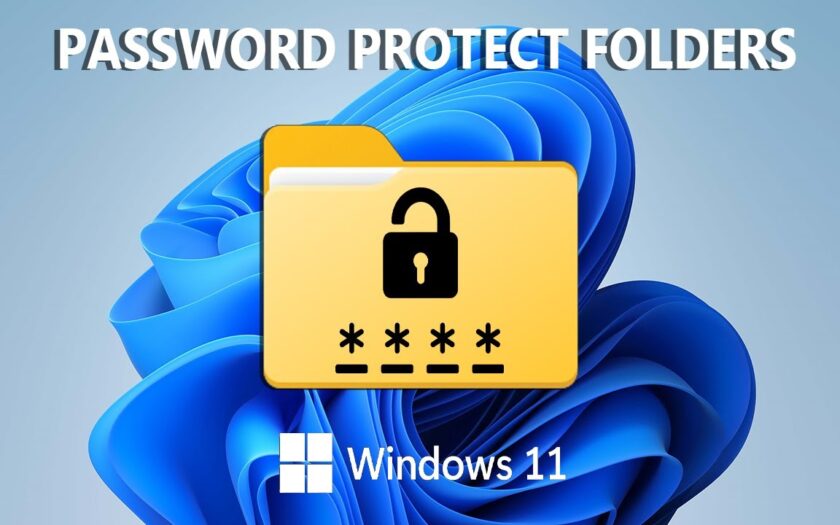Method 1: Use Windows Encrypting File System (EFS)
Encrypting File System (EFS) is a built-in Windows feature that allows users to protect folders using their Windows account. It encrypts the data so that only your user profile can access the files.
Steps:
- Right-click on the folder you want to protect.
- Click on Properties.
- In the General tab, click Advanced.
- Check the box that says Encrypt contents to secure data.
- Click OK, then click Apply.
- Choose whether you want to apply the encryption to the folder only or also to all files and subfolders.
- Click OK again.
Important:
- This method does not require a password to open the folder manually.
- It only allows the current Windows user to access the folder.
- If another user logs in to your PC, they won’t be able to open the folder.
- You’ll be prompted to back up your encryption key — do it to avoid data loss.
Method 2: Use a Compressed (Zipped) Folder with a Password (Limited)
Windows doesn’t support password-protecting zipped folders natively, but here’s how you can use a workaround if you’re sending a folder and want minimal protection.
- Right-click the folder you want to compress.
- Select Send to > Compressed (zipped) folder.
- A .zip file will appear.
- To add a password, you need to open it in a third-party program like WinRAR or 7-Zip.
Since we are not using software here, this method does not allow actual password protection in native Windows zip.
✅ Use this method if you’re planning to manually lock the zipped folder with a tool later. Otherwise, skip it.
Method 3: Use BitLocker to Encrypt a Virtual Drive (Windows Pro Only)
If you’re using Windows 10 or 11 Pro, you can create a virtual drive, move your private files inside it, and lock it with BitLocker (Microsoft’s disk encryption tool).
Steps:
- Search for “Disk Management” in the Start Menu and open it.
- From the menu, click Action > Create VHD.
- Select a location to save the virtual hard drive file.
- Choose a size (e.g., 1 GB) and select Dynamically expanding.
- Click OK.
Once it appears:
- Right-click the new unallocated disk > Initialize Disk.
- Choose MBR and click OK.
- Right-click again > New Simple Volume.
- Assign a drive letter and complete formatting.
Now encrypt it:
- Open File Explorer.
- Right-click the new virtual drive > Turn on BitLocker.
- Choose Use a password to unlock.
- Set and confirm your password.
- Save the recovery key securely.
- Click Start Encrypting.
Once set up:
- You can copy your private files into the encrypted drive.
- When finished, right-click and eject the drive.
- To reopen, double-click the .vhd file and enter your password.
Method 4: Hide the Folder Using File Properties (Minimal Security)
This method is basic and only useful for hiding the folder from plain sight.
Steps:
- Right-click on the folder you want to hide.
- Click on Properties.
- Under the General tab, check the box next to Hidden.
- Click Apply, then choose whether to hide just the folder or all files inside too.
- Click OK.
To make hidden files invisible:
- Open File Explorer.
- Click on the View tab.
- Uncheck Hidden items.
To view it again, simply reverse the steps.
This is not a secure method, but it can deter non-technical users.
Tips for Better Folder Security Without Software
- Use a Windows account password: Locking your user account helps protect everything inside.
- Enable full-disk encryption with BitLocker: For Windows Pro users, encrypting the entire drive adds another layer of protection.
- Separate user profiles: For shared PCs, create different user accounts so that folders can’t be accessed across accounts.
- Don’t rely solely on “hidden” folders: They offer no real protection from tech-savvy users.
Conclusion
You can password protect or restrict access to folders in Windows without using any third-party software. The methods vary in complexity and security level:
- Use EFS encryption for file-level protection tied to your account.
- Use BitLocker for robust encryption (Pro editions only).
- For minimal needs, use folder hiding or batch script methods (if acceptable).
- For real password protection, consider combining EFS with account-level security.

